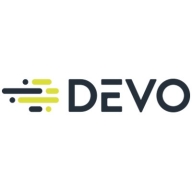

Devo and Elastic Observability compete in the data monitoring and analysis sector. Devo stands out in pricing and customer support, while Elastic Observability impresses with its extensive feature set.
Features: Devo is noted for fast query performance, scalability, and efficient data integration capabilities. Elastic Observability offers a comprehensive feature set with diverse integrations and advanced analytics.
Room for Improvement: Devo users suggest enhancements in alerting functionality, improved documentation, and more intuitive interface options. Elastic Observability faces challenges with setup complexity, requires better training materials, and could simplify its initial configuration process.
Ease of Deployment and Customer Service: Devo is recognized for straightforward deployment and responsive customer service, aided by guided installation. Elastic Observability is less intuitive but has effective customer support for issue resolution.
Pricing and ROI: Devo is known for its competitive pricing and favorable ROI due to lower setup costs. Elastic Observability, while more expensive, provides satisfactory ROI through advanced analytics and features.


Devo is the only cloud-native logging and security analytics platform that releases the full potential of all your data to empower bold, confident action when it matters most. Only the Devo platform delivers the powerful combination of real-time visibility, high-performance analytics, scalability, multitenancy, and low TCO crucial for monitoring and securing business operations as enterprises accelerate their shift to the cloud.
Elastic Observability is primarily used for monitoring login events, application performance, and infrastructure, supporting significant data volumes through features like log aggregation, centralized logging, and system metric analysis.
Elastic Observability employs Elastic APM for performance and latency analysis, significantly aiding business KPIs and technical stability. It is popular among users for system and server monitoring, capacity planning, cyber security, and managing data pipelines. With the integration of Kibana, it offers robust visualization, reporting, and incident response capabilities through rapid log searches while supporting machine learning and hybrid cloud environments.
What are Elastic Observability's key features?Companies in technology, finance, healthcare, and other industries implement Elastic Observability for tailored monitoring solutions. They find its integration with existing systems useful for maintaining operation efficiency and security, particularly valuing the visualization capabilities through Kibana to monitor KPIs and improve incident response times.
We monitor all Log Management reviews to prevent fraudulent reviews and keep review quality high. We do not post reviews by company employees or direct competitors. We validate each review for authenticity via cross-reference with LinkedIn, and personal follow-up with the reviewer when necessary.